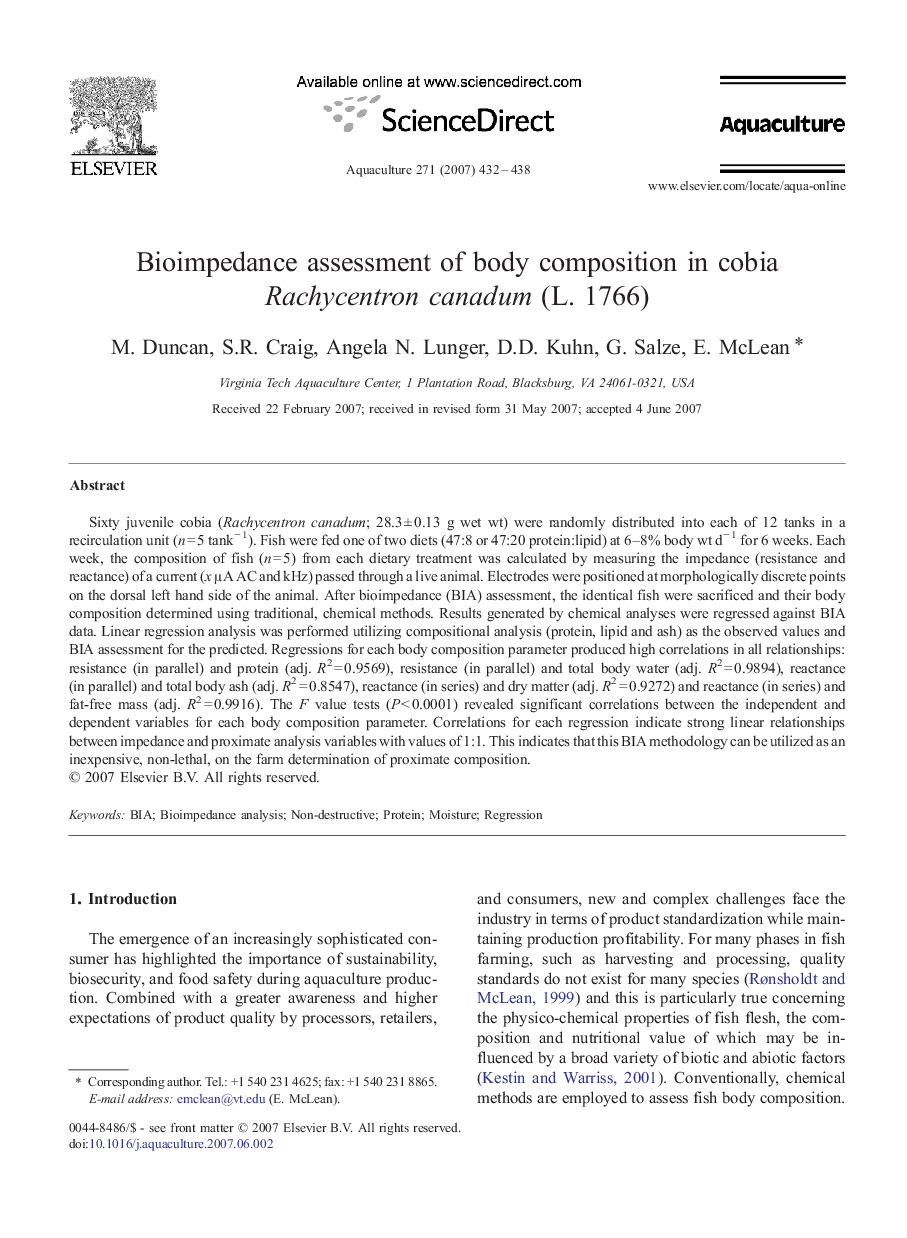| Article ID | Journal | Published Year | Pages | File Type |
|---|---|---|---|---|
| 2425167 | Aquaculture | 2007 | 7 Pages |
Sixty juvenile cobia (Rachycentron canadum; 28.3 ± 0.13 g wet wt) were randomly distributed into each of 12 tanks in a recirculation unit (n = 5 tank− 1). Fish were fed one of two diets (47:8 or 47:20 protein:lipid) at 6–8% body wt d− 1 for 6 weeks. Each week, the composition of fish (n = 5) from each dietary treatment was calculated by measuring the impedance (resistance and reactance) of a current (x μA AC and kHz) passed through a live animal. Electrodes were positioned at morphologically discrete points on the dorsal left hand side of the animal. After bioimpedance (BIA) assessment, the identical fish were sacrificed and their body composition determined using traditional, chemical methods. Results generated by chemical analyses were regressed against BIA data. Linear regression analysis was performed utilizing compositional analysis (protein, lipid and ash) as the observed values and BIA assessment for the predicted. Regressions for each body composition parameter produced high correlations in all relationships: resistance (in parallel) and protein (adj. R2 = 0.9569), resistance (in parallel) and total body water (adj. R2 = 0.9894), reactance (in parallel) and total body ash (adj. R2 = 0.8547), reactance (in series) and dry matter (adj. R2 = 0.9272) and reactance (in series) and fat-free mass (adj. R2 = 0.9916). The F value tests (P < 0.0001) revealed significant correlations between the independent and dependent variables for each body composition parameter. Correlations for each regression indicate strong linear relationships between impedance and proximate analysis variables with values of 1:1. This indicates that this BIA methodology can be utilized as an inexpensive, non-lethal, on the farm determination of proximate composition.
